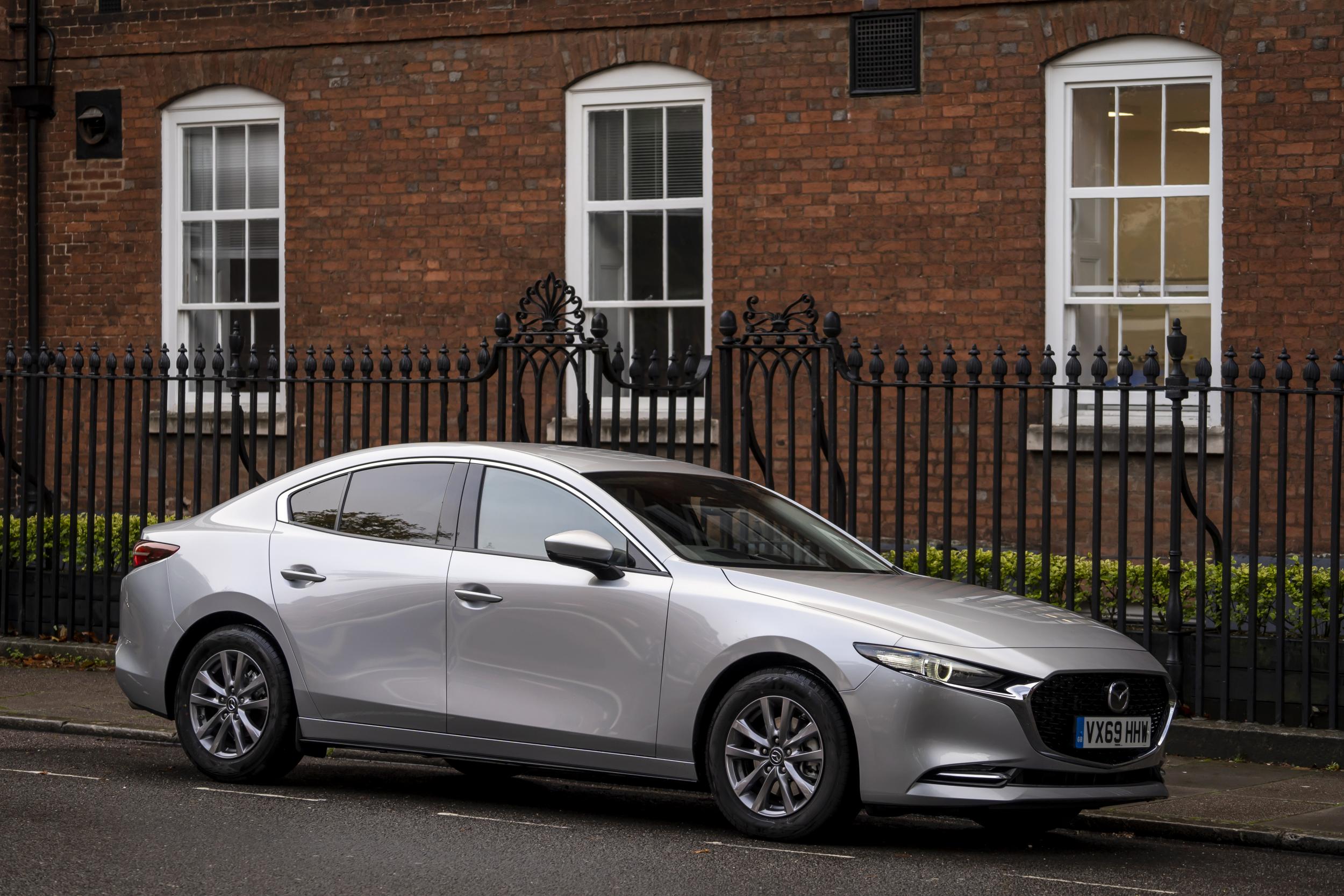This website uses cookies so that we can provide you with the best user experience possible. Cookie information is stored in your browser and performs functions such as recognising you when you return to our website and helping our team to understand which sections of the website you find most interesting and useful.

One of the greatest challenges in the car industry has long been how to turn a hatchback into a saloon – without, that is, sacrificing looks and style. There have been some woeful examples – the now obscure Vauxhall Belmont (yes, like a hotel) that was spawned from the Mark 2 Astra sticks in my mind. Such vehicles are usually required for more “conservative” car markets, such as Ireland and Spain, for example (and indeed much of eastern Europe), and are no more than the hatch with a box stuck on the back.
Not so the Mazda 3 saloon, the sibling of the very good looking Mazda 3 hatch. Mechanically they are pretty much identical, but the reason why the saloon version looks so well-portioned and sleek is because Mazda changed virtually every body panel to make it so. I’ve no idea how the economies of scale work in such an exercise – the saloon will be a fairly small seller globally – but no matter.
The spec
Mazda 3 Saloon 2.0 GT Sport
Price: £27,295 (range starts at £23,370)
Engine capacity: 2.0 litre petrol 4-cyl, 6-sp manual
Power output (ps @ rpm): 180 @ 6,000
Top speed (mph): 134
0-60mph (seconds): 8.2
Fuel economy (mpg): 50.2
CO2 emissions (g/km): 102
Apparently, only the bonnet and windscreen are carried over from the hatch. The boot of the rebooted version is actually bigger than the boot of the hatch version. So there you go.
Anyway, it looks very much like slightly scaled-down Mazda 6, its “big brother” saloon, which is a good thing. The accentuated curves, as if vestigial wings from some 1950s design, are part of what Mazda calls its “Kodo” look, and, with the purposeful grille and smooth, flawless lines, it is an impressive looking medium saloon.
The interior enjoys some very high class materials too, and, in upper spec models, a really up-to-date package of equipment. The leather is just the right side of firm, and the plastics all of premium-feel quality – albeit quite dark and sombre. The touchscreen is complemented by a big dial in the centre console – blissfully easy to use, as is the satnav and heating controls (and in my car I had the benefit of a heated seat and steering wheel).
The adaptive cruise control (which means automatic braking/speeding up when following a vehicle in front) completes the suite of driver aids you’ve come to expect in 2020.
None of that, though, is what makes the Mazda 3 a special car. That is reserved for the engine, and its clever “compressed ignition” technology. This, basically, makes the petrol engine far more efficient by heating the air-petrol mixture and making combustion easier. It is a little odd, for the driver, because it makes the car sound more like a diesel, and a bit grumbly at times, but it’s still responsive, accelerative and, above all, rewards its owner with excellent diesel/hybrid-style fuel economy.
Mazda is a long-time pioneer and experimenter – it persevered with the unusual rotary engine for a long time – and what it calls its “SkyActiv” engineering is certainly in that tradition. It will do the sprint to 60mph in about 8 seconds, and return just over 50 miles per gallon, and notably low CO2 emissions – all from a non-turbo-charged 2-litre petrol engine. Very smart. The only downside, as far I can see, is that slightly gruff engine note and the shortish service interval – some 12,500 miles or 12 months.
We should be grateful, in the car world, for what Dominic Cummings famously called the weirdos and the misfits, those who think about things in novel ways and plough their own furrows. Mazda has been a studiously idiosyncratic player in the business for decades. Like most Japanese-based firms it ignored the diesel for a long time, and still today has no hybrid, let alone pure battery electric-powered vehicle in its range (though the Mazda 3 does have “mild hybrid” technology to assist performance and economy a little).
Mazda revived the small sports car in 1989 with the MX-5, for which the world should be thankful (especially the Fiat-engine Fiat and Abarth 124 derivatives, by the way). The firm has had its ups and downs – some of the cars, even recently, rusted rather too readily, and those rotary engines proved a touch fragile in service, but it’s great to have a car company around that somehow combines traditional Japanese corporate culture with a petrol head’s instinct for making cars that are a joy to drive (even if giant Toyota recently took a shareholding in it). The Mazda 3 saloon, just like the company that makes it, is really rather more interesting than you might think.



 Africana55 Radio
Africana55 Radio 

